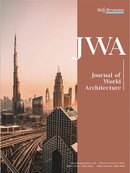Abstract
With the progress of urbanization in China, the pace of urban renewal is accelerating. Various factors have prompted the transformation of industrial buildings in the city. Following the transformation, old industrial buildings have shown a new look with diversification and modernization. This article briefly describes contemporary China. The background of industrial building renovation and the analysis of the redevelopment and utilization modes as well as renovation strategies in conjunction with case studies provide a summary and enlightenment for the renovation of industrial heritage buildings in the city.
References
Mesthrige JW, Wong JKW, Yuk LN, 2018, Conversion or Redevelopment? Effects of Revitalization of Old Industrial Buildings on Property Values. Habitat International, 73: 53–64. https://doi:10.1016/j.habitatint.2017.12.005
Li W, 2022, Research on Reconstruction and Reuse of Old Factory Buildings Under the Background of Urban Renewal. Housing, 2020(22): 1–2 + 38.
Zhu X, 2019, Green Civil Transformation and Utilization of Industrial Buildings in Urban Renewal. Urban Housing, 26(11): 84–86.
Li J, 2020, Research on Transformation Strategy of Urban Industrial Building Heritage. Architecture and Culture, 2020(07): 88–89.
Li B, 2009, The Investigation on Protective Reuse Mode of Urban – Industry Architectural Heritage. Industrial Construction, 39(S1): 4–6.
Luo R, 2006, Aesthetic Performance of Steel Structure Buildings – On the Technical Beauty of Architecture. Development Guide to Building Materials, 2006(01): 66–69.
Zhou Y, Wang H, Mo H, 2019, Activation Urban Inefficient Space Through Creativity-Transformation Design of 246 Vision Studio in Yanchang Campus of Shanghai University. Housing Science, 39(11): 64–69 + 87.
Airas A, Hall PV, Stern P, 2015, Asserting Historical “Distinctiveness” in Industrial Waterfront Transformation. Cities, 44: 86–93. https://doi.org/10.1016/j.cities.2015.02.002
Blagojevic MR, Tufegdzic A, 2016, The New Technology Era Requirements and Sustainable Approach to Industrial Heritage Renewal. Energy & Buildings, 115: 148–153. https://doi.org/10.1016/j.enbuild.2015.07.062
